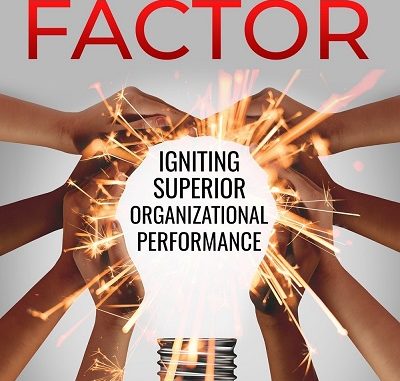
It’s clear from the tonality of James T. McKim, Jr.’s new book that he’s encouraging you to have agency. To be proactive. To be a go-getter. The time for diplomatic word choice and excess flowery language is over: “In many cases, we see organizations that are not really looking at diversity, equity, and inclusion and don’t have the market penetration that they could have—and probably should have. They have poor organizational performance.
There is attrition in your organization because people don’t feel valued. We all want to be valued as individuals. If an employee is not feeling valued, that employee is going to leave. As Edward Hubbard noted, ‘Employees will often cast their vote of dissatisfaction and level of commitment by using the Law of Two Feet (i.e., they go somewhere else).’” It’s through this kind of no-BS approach that McKim Jr.’s book lives up to its equally direct title – The Diversity Factor: Igniting Superior Organizational Performance. McKim Jr. makes the experience feel all-encompassing because of how often he engages the reader with charts and wall-breaking statements. Often this can come across as kind of hackneyed and tonally disruptive.
But here, it’s all part of the reading experience’s continuity. In a business leadership position, McKim Jr. states, you carry not only the greatest responsibility to ensure equity and diversity reign so as to ensure progressive longevity. You also have a moral standard to model, a cross to honorably bear. “Employees are burned out. They’re not being rewarded for the extra hard work that they’re putting in, especially during this time of a pandemic,” he writes. “…In a conversation I had with Nannan Hu he observed, ‘…when minorities get aggressive, they’re seen as aggressive right? And when white people are assertive, they’re seen as seen as like, a positive thing, right?’ Also, he has seen that Asian Americans are often seen as workers rather than leaders. For example, we see this manifest as getting passed up for promotions white folks being taken aback by a vocal/assertive Asian-American like him.”
AMAZON: www.amazon.com/Diversity-Factor-Igniting-Organizational-Performance/dp/B09ZCKR3B6
Unlike a lot of people in his position, McKim Jr. is able to turn every observation and every fact-based statement about workplace inequality into a positive. He never settles for out-and-out condemnation, but rather, again, abstaining from varnish for the sake of promoting agency, diversity. Change – overall speaking.
“Looking at diversity is really looking at the equitable inclusion of diverse people. Demographic trends indicate that the workforce is becoming more and more diverse in terms of race, ethnicity, by age, ability, and socioeconomics. However, there is much inequity in how people are treated,” McKim Jr. writes in this vein. “At a macro (i.e., societal) level, diversity looks like industries where regardless of their group— race, age, gender, disability, and socioeconomic status—pay is equal. The ratio of the number of employees from various groups in various positions in organizations is on par with the number of people from those groups in society. At a micro (i.e., organizational) level, diversity looks like high employee and customer satisfaction and ideas flowing from everywhere in the organization.”
Clay Burton

1 Trackback / Pingback
Comments are closed.